|
|
|
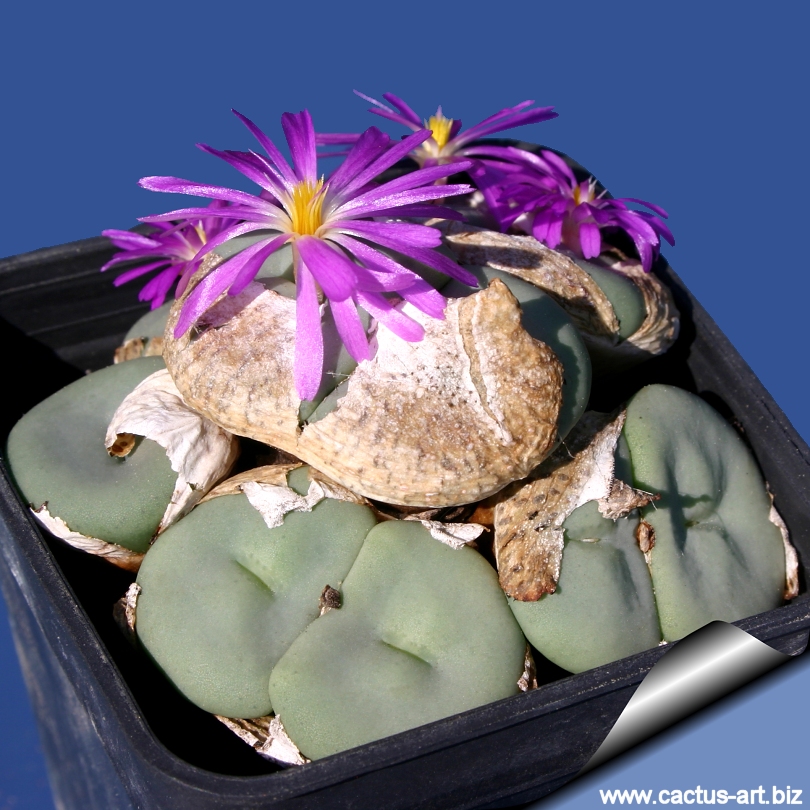
Conophytum pearsonii
What a unique plant! The large flat or concave tops give it it an
interesting appearance.
|
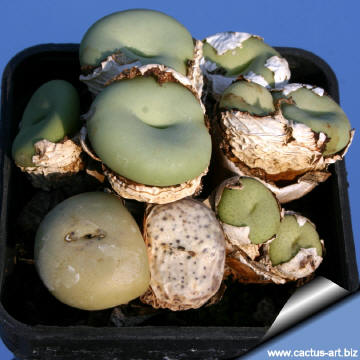 |
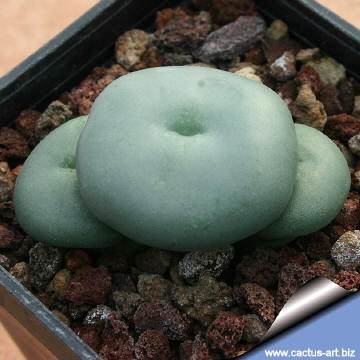 |
|
. |
|
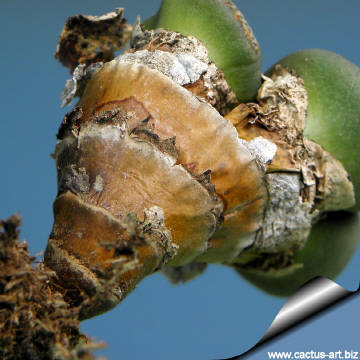 |
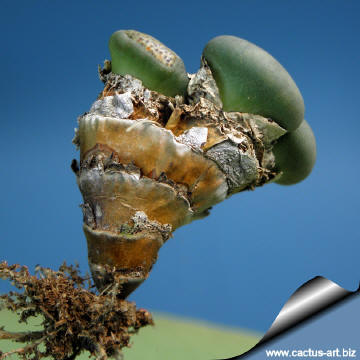 |
|
. |
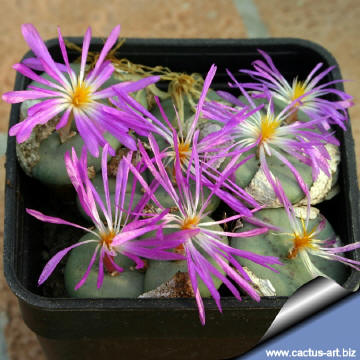 |
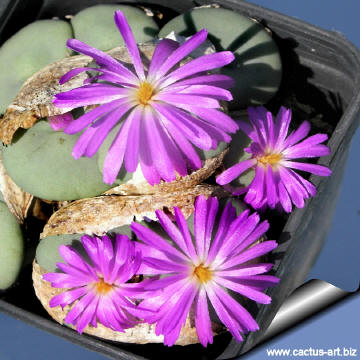 |
|
Advertising
|
|
|
|
|
|
|
Family: Mesebrianthemaceae (Aizoaceae)
Conophytum
pearsonii
Accepted
Scientific name: Conophytum
minutum var. minutum (Haw.) N.E.Brown
Origin:
Northwestern South Africa, near Bakhuis
Habitat: It
forms odd, almost fake looking clumps on bare rock on Namaqualand
quartzfield habitat. This species thrives in full sun.
Synonyms:
- Mesembryanthemum minutum
- Conophytum minutum (Haw.) N.E.Br.
- Conophytum glabrum Tischer
- Conophytum braunsii Tischer
- Conophytum tubatum Tischer
- Conophytum minutum (Haw.) N.E.Br. var.
pearsonii (N.E.Br.) Boom
- Conophytum pearsonii N.E.Br. var. latisectum
L.Bolus
- Conophytum pearsonii N.E.Br. var. minor
N.E.Br.
- Conophytum parvile
|
|
Description: C.
pearsoni has been reclassified from being a stand alone species
to a variety of
C. minutum, it is one of the smallest or dwarf cushion
forming succulent (but not so-minute as
C. minutum is) that offsets readily forming small tightly
packed clumps. It makes, geometrical clusters of plants bodies, a sphere
formed of spheres.
Stem: It is
stemless (branches subterranean) or branch aerially.
Bodies (leaves): It have tiny roundish, slightly elongated heads
with large flat or concave tops 12 to 29 mm tall and the same in width,
broadly conical with flattened crown. Shiny, smooth dark blue-green to
grey-green covered with darker spots. The densely spotted thick sheaths
are papery to leathery.
Flowers: Produces masses of glossy, pale violet to mauve blooms
that emerge from a fissure about 3 mm long. They are simple, daisy-like,
scentless, early diurnal, and about 20 mm across.
Blooming season: They arise at the beginning of the growing period
in September to October. Seedlings are capable of bearing flowers within
2 to 3 years.
CONOPHYTUMS: Plants of
the genus Conophytum are also known as 'living pebbles'.
During the rest period (the summer months in Europe) a new body forms
inside the old, gradually taking all the substances from it until all
that remains is the skin, which dries and protects the young plant from
the heat of the sun and excess evaporation of water. The resting
Conophytum protected by this dry cover resembles a pebble and hence the
name 'living pebble'. The growth period of most species is from
August to March. The temperature should be about 10 to 12°C
|
|
|
|
|
|
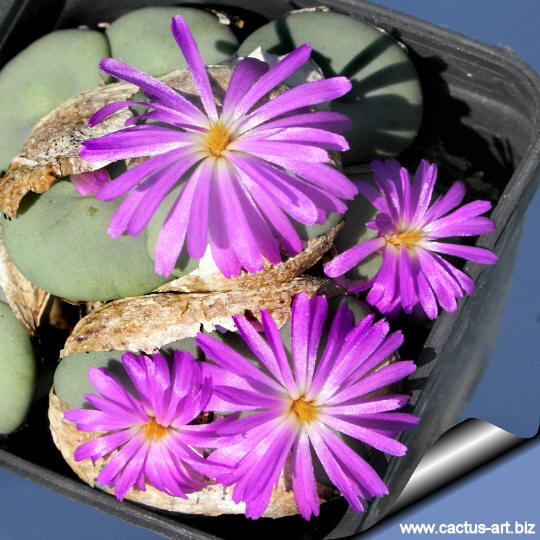
It is a fascinating minuscule plant with tiny daisy-like pink-magenta
flowers in autumn.
Cultivation: Conophytums
are
very succulent caespitose plants which - next to Lithops - are
among the most popular for their comparative ease of cultivation,
particularly C. pearsonii is one of the easier and more
reliable species to grow. They do well in full sunlight, partial shade,
greenhouses, hotbeds or houses. These plants grow on winter rain and
head for summer dormancy. They require little water; otherwise its
epidermis breaks (resulting in unsightly scars). Water minimally in
summer, (only occasional misting when the plant starts shrivelling), but
it will generally grow even in summer if given water. Water regularly
in winter after the previous year's leaves have dried up. Requires good
drainage. Keep cool and shaded in summer, it needs full sun or light
shade. Hardy to -2°C. Ensure a very good ventilation.
Avoid to repot frequently. This plant may stay in the same pot for many
years.
Propagation: It can be
reproduced both by cuttings and seeds. The best method of propagation is
by separating the clumps, take the cutting from a grown-up mother plant.
Each cutting must contain one or more
heads along with a fraction of root.
Photo of conspecific taxa, varieties,
forms and cultivars of to the
Conophytum minutm
complex
(This
Taxon
has lots of synonyms ( like many other Conophytum) whit several
controversial varieties and subspecies and comprises a multitude of
different forms, but where each form is linked to others by populations
of plants with intermediate characteristics):

 |
|